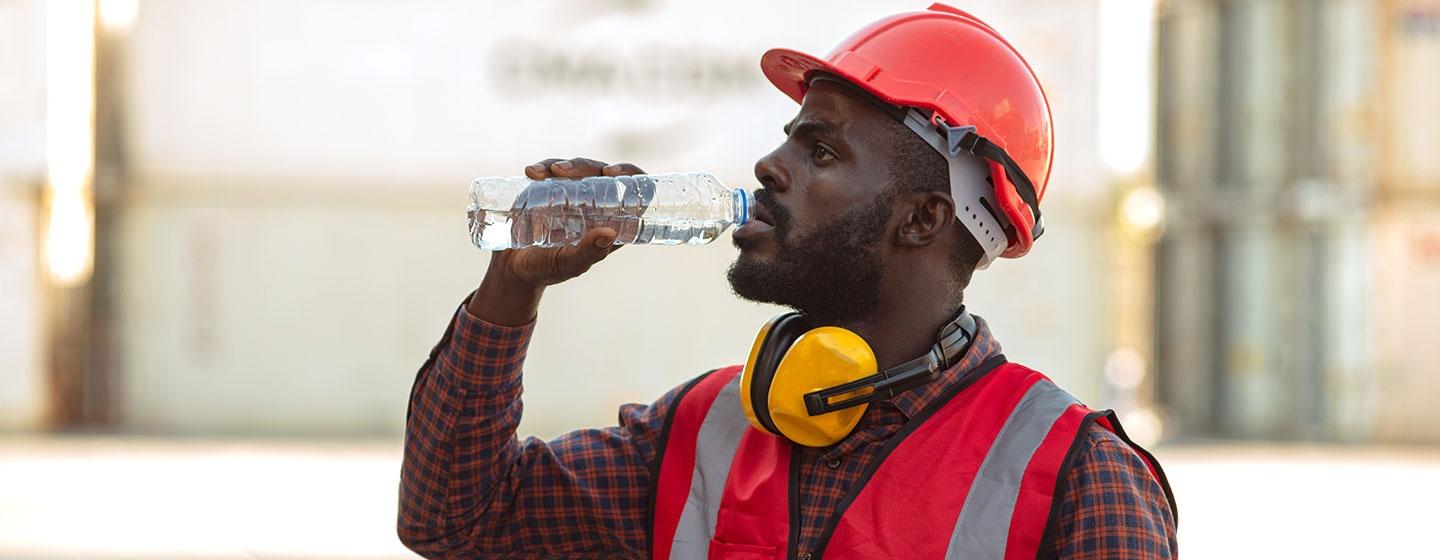New York Lags Behind Setting Worker Protections for Extreme Heat

With hot summer temperatures looming in New York, a bill to improve worker protections during extreme heat could die — once again — just as the heat arrives.
The bill, called the TEMP act, would require many employers to provide workers access to hydration, air conditioning, shade, and other protections during high-heat days. But it has yet to pass either the Assembly or the state Senate, with only a few weeks left in the legislative session. Previous efforts to pass similar legislation, dating back to 2019, failed.
This comes as advocates and some officials — including New York Attorney General Letitia James — push the federal Occupational Safety and Health Administration, or OSHA, to create a new nationwide extreme heat working standard for indoor and outdoor workers. As that process remains ongoing, some states have leaped ahead. California, Oregon, and Minnesota have introduced standards that provide further protections for workers when temperatures soar.
But in New York, those efforts have stalled.
“We can't wait for OSHA to act,” said state Sen. Jessica Ramos, the bill’s lead sponsor, who represents parts of Queens and chairs the Senate’s committee on labor. “We need to take matters into our own hands and update our labor laws.”
The stakes for workers are high. Public data shows workers in New York face a higher risk of severe injury on high-heat days. Those risks could compound this summer, as meteorologists expect higher than normal temperatures across much of the state. Scientists have found climate change makes heat waves more common, as emissions from burning fossil fuels trap heat in the atmosphere.
“The consequences of falling behind means that more New Yorkers — especially outdoor workers — will face these negative consequences of their work,” said Ramos, pointing to concerns over heat exhaustion, heat stroke, and chronic heat-related illnesses. “We want to make sure we’re protecting every worker.”
Knowing the law
Carlos Gutierrez knows those risks well.
These days, he can usually be found educating workers across the Finger Lakes region about their rights in his role as the co-director of the Midstate Council For Occupational Safety and Health.
But before landing in Ithaca, Gutierrez lived in Texas, working in construction on highways during the summer. He still remembers the baking heat, soaring to 120 degrees some days.
“As a worker, I was not concerned or aware of the safety and health care law,” said Gutierrez. “But it definitely was hot, and there were some situations that were very dangerous.”
Now, Gutierrez worries that heat could exacerbate the risks many workers already face on construction sites and farms, where they can be under pressure from their bosses to continue work in all conditions, regardless of the impact on their health.
“The main concern is, unfortunately, there are many, many employers out there that are not being responsible and taking advantage of workers,” he said.
With no specific laws for high-heat days, workers must rely on what OSHA calls the “general duty clause” –– the law that requires employers to maintain a safe and healthful workplace. But such vague language makes it difficult for employees to advocate for better conditions, Gutierrez said.
The current protections are piecemeal and insufficient, according to Jessica Maxwell, executive director of the Workers' Center of Central New York. Without stronger regulations, workers’ lives are put at risk, she said.
“The goal is not to wait until something is so bad that people are dying from it before we take action,” said Maxwell. “The goal is to mitigate and change as it's needed to prevent those kinds of situations from happening.”
Waiting for regulations
Already, the heat has proven fatal for workers in New York. Timothy Barber, 35, collapsed at a construction site in Geneseo, in the Finger Lakes region, during the summer of 2020. He was treated for heat stress and heat exhaustion and died of hyperthermia, according to an OSHA investigation.
Advocates and officials believe better standards — both in New York and federally — could prevent further deaths like Barber’s.
In February, New York Attorney General Letitia James led a charge of attorneys general from across the country urging OSHA to protect workers from heat exposure. They called on the agency to set an emergency temporary heat standard for farmworkers and construction workers, including setting a heat exposure threshold and requiring employers to implement preventative measures by May 1.
But that date has come and gone without any new standards. Though the agency announced it would consider a heat-specific workplace standard in 2021, that process is likely to drag on for years, said Alexis Guild, the vice president of strategy and programs at the national advocacy organization Farmworker Justice.
That leaves the question of whether there will be extreme heat protections for workers in New York this summer in the hands of the state Legislature. The TEMP Act remains under consideration as lawmakers enter the final weeks of the legislative session.
The bill has received support from some unions and worker advocacy groups, including the Teamsters. But industry groups often push back against such legislation, said Guild, arguing that they know how to tailor their workers’ protections better than overarching rules.
Yet, without any national standard, state legislation can mean there’s at least a minimum protection.
“Workers are already experiencing these extreme heat days,” said Guild. “In the absence of a federal heat standard, it's really up to the states to really put those protections in place.”
Correction: Carlos Gutierrez is the co-director of the Midstate Council on Occupational Safety and Health. He does not also work for the Tompkins County Workers' Center, which this article previously stated.
Related

NY Announced New Land Conservation Grants. But Is the State Doing Enough?
The DEC announced $3 million for land conservation projects, including $100,000 for the ADK Land Trust, but environmentalists say the state needs to do more.


